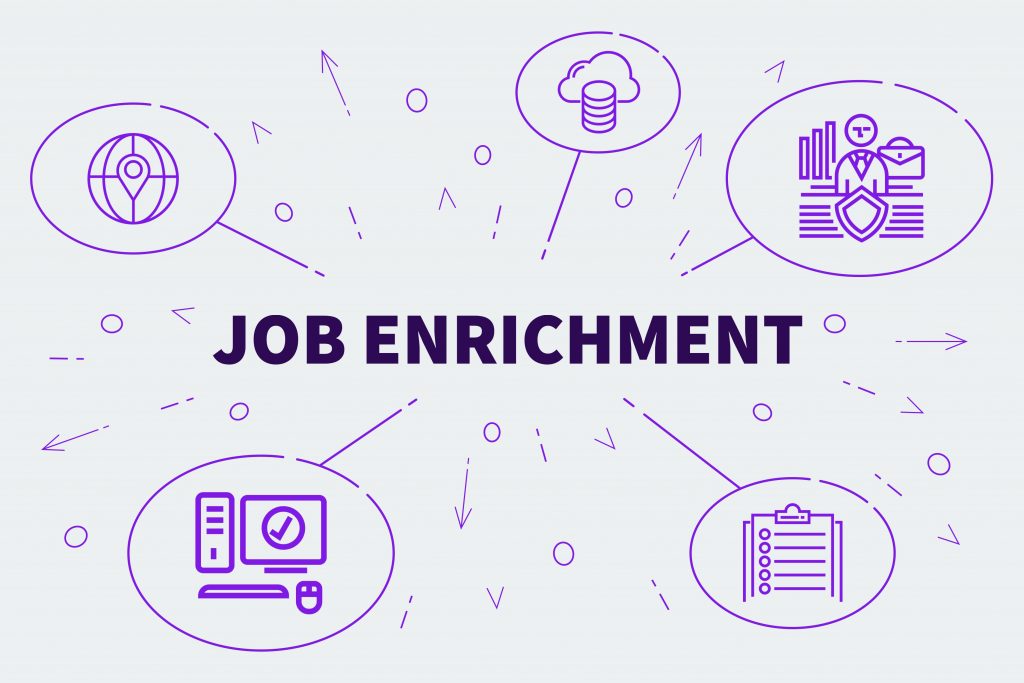A strong team of employees is the greatest asset at any company’s disposal. This is why every business manager should pay special attention to supporting employee motivation and the methods of motivation available to them.
Happy workers are better workers, creating a constructive environment which will have a beneficial influence on everything from productivity to customer interactions.
Essentially, establishing a positive workplace culture in this manner will lay the foundations for sustained success.
Why Motivation Needs To Be A Priority
Unfortunately, statistics show that morale has dropped in almost half of all businesses around the globe, with the UK conforming to these overall findings.
When this is allowed to continue, an apathy for the job leads to poor customer experiences, reduced workloads, and insufficient collaborations.
Moreover, employees will feel discouraged from expressing ideas that could potentially transform the business in a desirable way.
Increased staff turnover rates are another consequence, leading to a host of additional problems.
Therefore, a conscious effort to boost employee motivation and engagement is the only way to overcome the growing challenges of the modern workplace.
There are various methods of motivation available, both financial and non-financial which we will go into now.
Motivation By Money
While this blog post is about looking beyond financial incentives, it would be very naive to ignore the significance of money as a motivational tool.

Let’s face it; earning money is the primary reason for having a job in the first place. Even when employees have other aspirations and incentives for following a specific career path, there’s no denying that a boosted bank balance will provide an extra source of inspiration. This can manifest through an improved basic wage, although performance based-financial incentives are arguably better as they provide ongoing motivation.
The problem with money is that it forces us to work rather than making us want to work. Essentially it gives employees a reason to head into work each day but achieves very little in terms of equipping them with a passion for work. Sadly, this lack of internal desire will become evident in everything they do.
Furthermore, economic situations mean that businesses simply don’t have the financial resources to keep throwing money at the issues, not least because financial incentives only solve a part of the problem.
So, while money is a great motivational tool that provides employees with a sense of purpose, the days of using it as the sole weapon in the business arsenal are quickly becoming a thing of the past.
Looking Beyond Financial Incentives for Methods of Motivation
Money does motivate, but inspiration is an emotional feeling that comes from within. As such, opening your eyes to non-financial motivation tools is essential. The longer you remain fixated on monetary incentives alone, the longer your business will be plagued by limited results.
There are many non-financial alternatives to consider. Here are 10 of the best ways to boost employee motivation levels throughout the company for significant and sustained improvements.
Job Security
Times have changed, and the days of losing one job on a Friday and starting your next role on the following Monday are becoming an increasingly distant memory. When combined with the rate of inflation and increased living costs, employees benefit from knowing that they have a job for the long haul far more than they do from getting paid an extra 20p per hour.

Employees will work far harder when they know that their future is with their current employer. Conversely, jeopardy and uncertainty can sap motivation.
After all, there’s little point in pushing yourself to the limit if you aren’t going to be around long enough to see the benefits.
Business managers and owners can leverage success off the back of these sentiments in a very effective manner.
Temporary contracts come with an air of uncertainty, which is why filling positions on a permanent basis is advised for the sake of motivation as well as the increased productivity that low staff turnover rates will bring. Removing zero-hour contracts can certainly help the cause too, as it allows employees to make financial and logistical plans. Aside from making them happier, this removes a huge distraction as well.
Work Flexibility and Motivation
Time is the most precious thing that anybody can ever possess, especially as we don’t know how much of it is available. While you cannot afford to let flexibility stand in the way of productivity, giving employees the opportunity to enjoy simple perks revolving around time management can pay dividends. Better still, this is a concept that can be incorporated for almost immediate results.

Flexi time and summer hours are hardly new concepts, yet many businesses (particularly small-to-mid-sized ventures) fail to utilise them effectively. Given the positive impact that they can bring despite requiring minimal financial investment, incorporating those ideas at the earliest stage possible should be high on any employer’s agenda.
In recent times, it has become increasingly accessible for employees to work remotely. Allowing employees to work from home for at least some of their working week has been shown to have positive effects for the business.
Meanwhile, 58% of employees have said that the ability to work from home would boost their motivation levels. Even when this isn’t used as a permanent basis, it can be implemented to support staff members when their children are ill.
Whether it’s reducing the travel time or avoiding the threat of leaving employees to wait around wasting time towards the end of each day, flexibility regarding time management is hugely important. If nothing else, it’s a simple touch that shows a human side to the company.
Moreover, the fact that you are doing employees a favour will usually inspire them to respond by working even harder.
Respect & Recognition at Work
Do you remember the classic Fatboy Slim lyric “I have to praise you like I should”? Whilst it might not appear to have any relevance at a glance, you should not forget this line.
Studies show that praising employees has a strong effect on a huge 67% of employees, which is an even greater success rate than performance-based financial incentives (60%) and increased salaries (52%).
Positive relationships are extremely significant in business. After all, most employees spend more time with their colleagues and employers than they do with their own friends. Therefore, feeling accepted and appreciated can have a monumental impact on the individual’s thoughts towards the business and their work as a whole.
We are taught from an early age, manners cost nothing.
While it’s important to maintain a sense of hierarchy across the business, there’s no excuse for looking down on people. As far as the human elements are concerned, a level playing field is the only way to guarantee a company culture that encourages respect.
Recognition shouldn’t be limited to praise. Actions speak louder than words, and giving employees increased responsibilities as a reward for their success in business is an effective tool too. When combined with vocal praise, employees are made to feel valued while also reinforcing the idea that they are climbing the career ladder. Perfect.
Employer-Employee Bond
The concept of utilising respect and recognition as a motivational tool already underlines the significance of a robust employer-employee relationship. However, the bond needs to extend far beyond a little praise and added responsibility.
While individual incentives are always the priority, giving employees an extra sense of motivation in wanting to work hard for you can make a big difference.
Your personality as a business leader is contagious.
Leadership has been described as the “ability to persuade others to seek defined objectives enthusiastically” and if you show passion for the work, it’s inevitable that this will rub off on employees.
Furthermore, this impact is likely to spread throughout the team like wildfire, meaning productivity and motivation will reach new heights.
Conversely, an employee that has no faith in your capabilities as a leader will soon lose any motivation to put in the extra effort at work. If you want staff members to grow and keep striving for more, it’s imperative that you invest in your own development.
Training courses are as pivotal for you as they are for the employees, especially if they focus on leadership and communication.
Great leadership can inspire employees to greatness, and this is something that most workers actively acknowledge. It is commonly stated that people quit bosses rather than jobs.
In truth, your influence as a leader probably has a greater impact on the company as a whole than any personal assignment that you may complete during your working day. Underestimate at your peril.

Job Rotation & New Challenges For Methods Of Motivation
From an employee’s perspective, there’s nothing less tedious than completing the same tasks day after day, week after week, year after year. When you fall into this viciously boring cycle, it becomes very hard to maintain any enthusiasm. Instead, productivity levels are likely to fall to the bare minimum. Frankly, human nature dictates that we require mental stimulation.
Variety is the spice of life, and your business should not forget it. Job rotation is a strategy in which employees get to try their hand at a variety of tasks.
The benefits include gaining a deeper understanding of the company and its processes, the development of new skills, and the opportunity to pinpoint which role their individual skills are best suited to. The motivational rewards are huge,
In addition to curing boredom, it encourages workers to develop and grow by stepping out of their comfort zones and challenging themselves to do new things.
Research shows that people change jobs twice as often as they gain promotions. Incorporating job rotation policies prevents the job from becoming stale, which can extend the average time spent at the company.
If nothing else, the emotional satisfaction of accomplishing goals is a phenomenon that has a profound impact on the brain’s natural motivation levels and work ethic.
By encouraging individuals to hit targets across multiple disciplines and job roles, the impact of those feelings will skyrocket. Finally, this is another step that can feed into the idea of creating team unity.
Health Benefits
It might not always feel like it (even for you as a business manager) but having a job is supposed to improve your life.
Considering nothing in this life is more important than our health, the company can make significant strides forward simply by promoting good employee health. Apart from aiding motivation levels across the business, it satisfies the human responsibilities of the employer.
Millions of people would like to get fit but feel that they don’t have the time. Incorporating fitness into the workday can increase their happiness as well as their energy levels, leading to greater motivation work hard.
This is also a fantastic way to support the idea of building a team atmosphere, especially by breaking down social barriers between different groups.
With ideas like the Cycle to Work Scheme , it is possible to see those benefits with minimal outlay due to the tax benefits. Alternatively, gym memberships or work sports teams can work wonders.
When people enjoy working out, as well as the physical rewards gained from it, they mentally associate this with work. This can only boost the motivation levels across the team.

Another option is to organise a charity sporting event or enter the team into a fun run. This combines physical benefits and team camaraderie with the idea of actively supporting a worthy cause.
This sense of compassion by the company can certainly influence the work ethic and employee motivation levels, carrying far more weight than an extra £20 in wages per month.
Workplace Nutrition
Nutrition is an equally crucial ingredient in the recipe for success, and you should never overlook the benefits that taking matters into your hands can bring.
Even seemingly small steps can generate huge rewards, which is why you should utilise those ideas right away.
Good hydration is paramount at all times. A 4% level of dehydration can cut productivity in half while even a 1% drop can lead to a 12% fall in productivity. A water cooler is one of the best office investments you’ll ever make.
Meanwhile, factoring in scheduled water breaks gives staff members a chance to refresh their minds before getting back to work at full speed. Coffee machines are a popular alternative too.
Providing snacks and meals throughout the day can have a positive impact too, especially when tied into the healthy eating routines. This is also a task that costs you very little money per person yet could save workers upwards of £10 per day compared to what they’d spend on food and drink from local shops.
This makes it a non-financial motivational tool that carries a monetary reward for them.

Workplace nutrition strategies make staff members feel valued while it also allows you to effectively reduce lunchtimes and embrace small regular breaks through the day.
This will have a positive impact on employee mindsets, aiding engagement and productivity in one fell swoop. This is something many small businesses neglect, which can help yours stand out from the crowd.
Job Enrichment & Enlargement
The concepts of job enrichment and job enlargement have already been touched upon. The former is defined by employees gaining “satisfaction in respect to their position” whereas the latter involves “additional duties and responsibilities”. Both have a huge part to play in unlocking greater levels of employee engagement and motivation and are each linked to growth.
Job enlargement is a potentially tricky subject as you cannot start asking more of your staff without rewarding them. Non-financial rewards such as gift cards can be used as an additional incentive.
The true key to success, though, revolves around showing them that the increased responsibilities are a reward for good work and can be considered the next step en route to gaining future promotions.

Enrichment encourages employees to take greater responsibility, particularly in terms of making managerial decisions relating to their roles within the company. Again, this can be sold as a crucial part of their development.
The sense of feeling valued combined with the knowledge that they are developing the right skills for future success can be very reassuring indeed.
Again, the relationships shared between employers and employees will play a massive role in selling the extra effort and workload in a positive fashion.
When the company treats the employee well, by embracing some of the other non-financial motivational tools to create a better working environment, individuals will be more willing to place their trust in the company.
Empowerment as a Method of Motivation
Employees like to feel that they have some control over their work. Likewise, knowing that their opinions matter can keep them engaged with the work.
One of the simplest ways to empower them in this way is to ask for their opinions ahead of business purchases or other key decisions such as branding decisions or which charitable causes should be supported for the year.
Actually, taking their ideas on board encourages them to continue letting their ideas be heard. Conversely, ignoring those opinions will lead them to give up. Perhaps more importantly, though, there needs to be an opportunity for growth. Stagnation is a motivation killer.
So, even when promotions aren’t available right now, empowering employees for future progress is vital.
Creating stronger job titles can be another successful strategy. They matter to employees because they “speak to the culture of recruiting and retaining top talent”.
Essentially, a better job title can prepare workers for greater success in the long-term, even when the financial rewards aren’t forthcoming in the immediate future.
Moreover, the ego boost can be very motivational.
When employees are left feeling powerless, motivation levels drop due to these crushing feelings. Whether right away or in a few months’ time, this will often lead individuals to start seeking employment elsewhere.
For as long as they are considering their options or trying to find a new role, it’s inevitable that productivity and motivation will hit a low. This can influence their colleagues too.
Employee Engagement Through Technology
Keeping employees in a positive frame of mind is one of the most challenging aspects of running a successful small business, and strong job engagement is an aspect that will generate added enthusiasm.
One of the best ways to achieve this is through modern technology. Aside from the motivational benefits for individuals and teams across the company, it keeps productivity at the desired level.
Statistics show that productivity is significantly reduced when companies persist with outdated tech systems. Moreover, according to AbacusNext, up to 80% of malware could be avoided by updating the computer facilities. The harsh reality is that distractions caused by trying to rectify IT problems will also frustrate employees and leave them thinking “what’s the point?” in trying hard.

However, it’s not all about focusing on productivity. The growth of virtual reality, 3D printing, and other advanced technologies has opened the door to new opportunities, and workers will be excited about using them. When combined with staff training on how to use cloud computing or modern facilities, it can breathe fresh life into previously tedious tasks and assignments.
Technology also enables you to utilise automation, removing human error while also allowing workers to focus on more exciting tasks rather than menial admin.
The world of business tech evolves at a rapid rate though, which is why you must always stay abreast of the latest updates and developments. While it does require an investment, it’s far more productive than pay rises.
Tailoring Non-Financial Incentives To Individual Needs
There are plenty of non-financial incentives that could be incorporated into your business strategy. One of the most important things to remember, however, is that you need to choose the right motivational tools for the individuals in your team.
Ultimately, non-financial methods that work for one group of employees won’t work for others. For example, staff members coming towards the end of their careers won’t care about job titles or ideas focused on long-term rewards. Instead, they’ll prefer ideas that create a better working environment in the immediate future. Conversely, junior staff members will respond to anything that can potentially help them climb the career ladder quicker.
Take the needs of your individual employees into account, and you won’t go far wrong.
A Conclusion of Non-Financial Methods of Motivation
Financial incentives remain a useful tool when aiming to increase motivation and productivity across the business, although it’s worth avoiding stocks and other ideas that carry little influence. Nonetheless, money isn’t the only method of motivation and injecting extra engagement and enticement through non-financial techniques is highly advised.
Strike the right balance, and your team will perform better than ever.
Benefits Cloud
If you’re looking to motivate your employees, help them save money and make their wages go further, then visit Benefits Cloud.
Benefits Cloud is an employee engagement platform launched by Petaurum Solutions.
